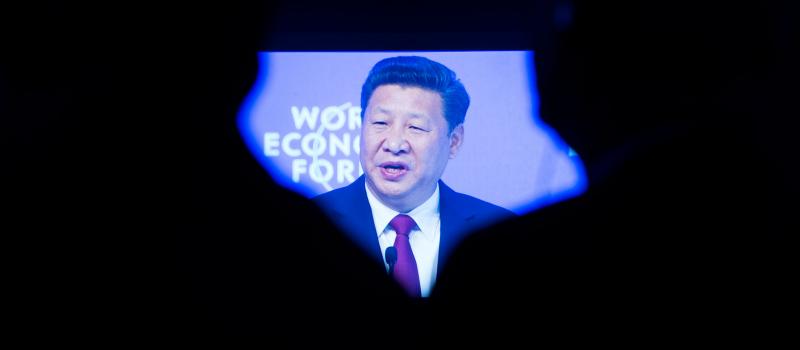President Xi Jinping, Davos Man
posted by Karim Pakravan on January 24, 2017 - 2:43pm

Donald Trump, the 45th president of the United States, has burst in the international scene as a disrupter, upending decades of relationships and conventions, and creating major uncertainties for America’s allies, rivals and rivals alike. Trump’s campaign rhetoric and his post-election tweets, as well as his choice of economic advisors presage major tensions in global trade relations and currency markets. In effect, the new administration is creating a vacuum in global economic leadership, creating an opening for China. The Chinese leadership has lost little time in exploiting this vacuum. The new “Davos Man” is President Xi JinPing, who positioned himself as the defender of globalization and free trade in his speech at the World Economic Forum recent meeting. President Xi, the first Chinese president to attend the WEF meetings in Davos, stated that "Many of the problems troubling the world are not caused by economic globalization…Whether you like it or not, the global economy is the big ocean you cannot escape from….. We must remain committed to free trade and investment. We must promote trade and investment liberalization, No one will emerge as a winner in a trade war."
China’s claim to global economic leadership was further strengthened when President Trump pulled out the United States from the TransPacific Partnership (TPP), threatened heavy import duties on U.S corporations producing goods abroad and stated that he would open negotiations on NAFTA. At the very least, these moves, which go against decades of liberalization, points to a protectionist United States. In the worst case, they are the opening salvo of a trade war with the major U.S trade partners.
What has China done and what will China do to claim this mantle of global leadership? The Chinese leadership has already hinted at reinvigorating a TPP, which would exclude the United States. However, the most powerful instrument that China currently has is its financial clout, clout that is being exercised through a series of bilateral and multilateral venues: the Asian Infrastructure Investment Bank (AIIB), the Silk Road Economic Belt, the Twenty First Century Maritime Silk Road and the Shanghai Cooperation Organization. I will focus on a few of these initiatives.
The centerpiece of the Chinese soft power projection is the newest multilateral financial institution (MFI) on the block, the Asian Infrastructure Investment Bank (AIIB). The AIIB represents a bold move by China to assert its economic and financial power in a global financial system dominated by the G-7. In addition to the AIIB, China launched a second MLFI in 2014, the New Development Bank (July 2014) with a capital of $50 billion, with the BRICs and South Africa as founding member. The AIIB (October 2014) was launched with $100 billion in capital and 57 member countries—the United States did not join. In comparison, the World Bank and the Asian Development Bank (ADB) have capital of respectively $223 billion and $160 billion. The AIIB became operational in 2015 celebrated its first birthday on January 16, 2016, having invested in 9 projects across Asia and Europe. So far, the AIIB seems well-managed, with its President Jin Liqun adopting best practices and lending standards similar to those of established MFIs such as the World Bank and the ADB. Lending by the AIIB is an essential element of the Chinese Silk Road projects, which aim at linking China, the Middle East and Europe through a massive road, rail and maritime transportation links.
The Trump administration see global economic relations as a zero-sum game and claims that his policies will put the United States on the winning side. In contrast, China is taking the lead on maintaining the existing global order of free trade and economic cooperation. Whether the Chinese stance is strategic or tactical remains to be seen, but the result will be the same, the isolation of the United States.

